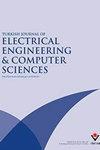Design and development of a Stewart platform assisted and navigated transsphenoidal surgery
IF 1.5
4区 计算机科学
Q4 COMPUTER SCIENCE, ARTIFICIAL INTELLIGENCE
Turkish Journal of Electrical Engineering and Computer Sciences
Pub Date : 2019-04-01
DOI:10.3906/ELK-1608-145
引用次数: 14
Abstract
In this study, technical details of a Stewart platform (SP) based robotic system as an endoscope positioner and holder for endoscopic transsphenoidal surgery are presented. Inverse and forward kinematics, full dynamics, and the Jacobian matrix of the robotic system are derived and simulated in MATLAB/Simulink. The required control structure for the trajectory and position control of the SP is developed and verified by several experiments. The robotic system can be navigated using a six degrees of freedom (DOF) joystick and a haptic device with force feedback. Position and trajectory control of the SP in the joint space is achieved using a new model-free intelligent PI (iPI) controller and it is compared with the classical PID (proportional-integral-derivative) controller. Trajectory tracking experimental results showed that the tracking performance of iPI is better than that of PID and the total RMSE of the trajectory tracking is decreased by 17.64% using the iPI controller. The validity of the robotic system is proven in the endoscopic transsphenoidal surgery performed on a realistic head model in the laboratory and on a cadaver in the Institute of Forensic Medicine. The key feature of the system developed here is to operate the endoscope via the joystick or haptic device with force feedback under iPI control. Usage of this system helps surgeons in long, fatiguing, and complex operations. This system can generate new possibilities for transsphenoidal surgery such as fully automated robotic surgery systems.辅助导航蝶窦手术Stewart平台的设计与开发
在这项研究中,介绍了基于Stewart平台(SP)的机器人系统作为内窥镜定位器和固定器用于内窥镜经蝶手术的技术细节。在MATLAB/Simulink中对机器人系统的逆运动学、正运动学、全动力学和雅可比矩阵进行了推导和仿真。设计了SP的轨迹和位置控制所需的控制结构,并通过多次实验进行了验证。机器人系统可以使用六自由度(DOF)操纵杆和带有力反馈的触觉装置进行导航。采用一种新型的无模型智能PI (iPI)控制器实现了关节空间SP的位置和轨迹控制,并与传统的比例-积分-导数(PID)控制器进行了比较。轨迹跟踪实验结果表明,iPI控制器的跟踪性能优于PID控制器,轨迹跟踪的总RMSE降低了17.64%。该机器人系统的有效性在实验室的真实头部模型和法医研究所的尸体上进行的内窥镜经蝶手术中得到了证明。这里开发的系统的主要特点是在iPI控制下通过操纵杆或触觉设备进行力反馈操作内窥镜。使用该系统可以帮助外科医生进行长时间、疲劳和复杂的手术。该系统可以为经蝶骨手术带来新的可能性,如全自动机器人手术系统。
本文章由计算机程序翻译,如有差异,请以英文原文为准。
求助全文
约1分钟内获得全文
求助全文
来源期刊

Turkish Journal of Electrical Engineering and Computer Sciences
COMPUTER SCIENCE, ARTIFICIAL INTELLIGENCE-ENGINEERING, ELECTRICAL & ELECTRONIC
CiteScore
2.90
自引率
9.10%
发文量
95
审稿时长
6.9 months
期刊介绍:
The Turkish Journal of Electrical Engineering & Computer Sciences is published electronically 6 times a year by the Scientific and Technological Research Council of Turkey (TÜBİTAK)
Accepts English-language manuscripts in the areas of power and energy, environmental sustainability and energy efficiency, electronics, industry applications, control systems, information and systems, applied electromagnetics, communications, signal and image processing, tomographic image reconstruction, face recognition, biometrics, speech processing, video processing and analysis, object recognition, classification, feature extraction, parallel and distributed computing, cognitive systems, interaction, robotics, digital libraries and content, personalized healthcare, ICT for mobility, sensors, and artificial intelligence.
Contribution is open to researchers of all nationalities.
 求助内容:
求助内容: 应助结果提醒方式:
应助结果提醒方式:


